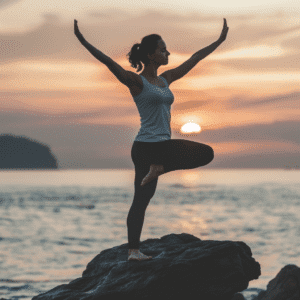
Improve your balance may have stumbled while walking or felt unsteady getting up from a chair. It’s more common than you think; the good news is you can do something about it. Balance is super important for everyone, whether you’re young, old, an athlete, or someone who wants to avoid those annoying trips and falls. In this post, I’ll share nine simple methods to help you improve your balance. Let’s dive in!
1. Strengthening Core Muscles

Why a Strong Core Matters
Your core is like the foundation of a house. When it’s strong, everything else works better. A strong core allows you to stand up straight, move smoothly, and keep your balance. Think of your core muscles as your body’s built-in stabilizers.
Easy Exercises to Try
- Planks: To perform a push-up, assume a stance in which you are resting on your forearms rather than your hands. Keep your body in a straight line from head to heels. Hold for 20–30 seconds to start.
- Crunches: Get into a prone position; right now, you should have your knees bent and your feet down hard on the ground. Extend your shoulders off the ground by using your abdominal muscles.
- Leg Raises: Lie on your back with your legs straight. Lift your legs towards the ceiling, then carefully lower them back down without allowing them to contact the floor while maintaining their straight position.
Tips
Incorporate these exercises into your routine at least three times a week. Begin with a low heart rate and progressively raise the intensity as you progress stronger.
2. Yoga and Pilates
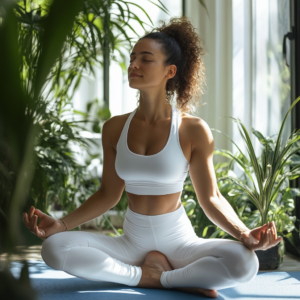
How They Help
Yoga and Pilates are amazing for balance. They focus on controlled movements, flexibility, and strength—all critical for good balance.
Poses to Practice
- Tree Pose: At the same time that you are standing on one leg, press the bottom of the other foot against the inside of the thigh of the leg that is standing. Hands can be in a prayer position or extended overhead.
- Warrior III: Stand on one leg, hinge at the hips, and extend your other leg back. Reach your arms forward for balance.
- Eagle Pose: Stand on one leg, wrap the other leg around it, and intertwine your arms in front of you.
Getting Started
If you’re new to yoga or Pilates, consider joining a class or following online tutorials. Plenty of beginner-friendly resources are available to help you get started.
3. Balance-Specific Exercises
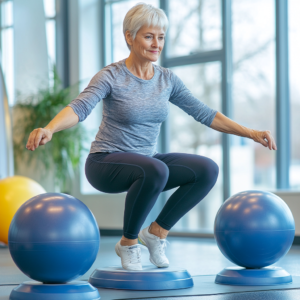
What They Do
Balance-specific exercises are designed to enhance your ability to stay stable directly. They challenge your body’s equilibrium and improve coordination.
Examples to Try
- Single-Leg Stands: Stand on one leg with the other bent at a 90-degree angle. Hold for 30 seconds, then switch legs.
- Heel-to-Toe Walk: If you want to walk in a straight line, you should put the heel of one foot in front of the toes of the other foot. This is a good place to start.
- Balance Board Exercises: Use a balance board to perform movements like shifting your weight from side to side or front to back.
Progression
As your balance improves, make these exercises harder by closing your eyes, standing on an unstable surface, or holding weights.
4. Tai Chi
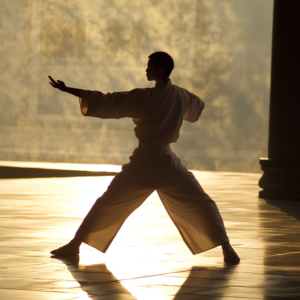
Why It Works
There is a martial technique in China called Tai Chi that is notable for its slow, controlled movements and deep breathing. It’s excellent for improving balance and coordination.
Basic Moves
- Weight Shifting: Stand with feet shoulder-width apart. Move your weight from one foot to the other on a moderate and steady basis.
- Single Whip: Step to the side, extending one arm outward and the other in front of you, like a whip’s motion.
- Cloud Hands: Move your hands in a circular motion in front of your body while shifting your weight from one foot to another.
Getting Started
You can learn the proper techniques by joining a Tai Chi class or watching online videos. Many community centers and fitness studios offer classes for beginners.
5. Improving Proprioception
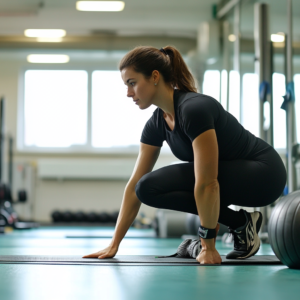
What It Is
Proprioception is your body’s ability to sense its position in space. Improving it can enhance your balance by helping your body respond more effectively to changes in terrain and movement.
Exercises to Do
- Balance Pads: Stand on a balance pad or cushion for squats or single-leg stands.
- Stability Balls: Use a stability ball for exercises like seated marches or bridges.
- Wobble Cushions: Stand on a wobble cushion while performing upper body movements.
Benefits
Better proprioception means improved coordination and a more accessible performance of daily activities. You’ll feel more stable and confident in your movements.
6. Strengthening Lower Body Muscles
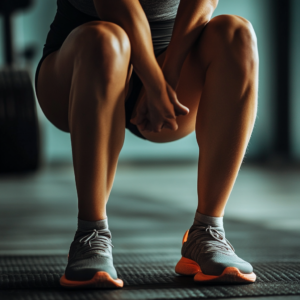
Why It’s Important
Strong legs, hips, and feet are essential for good balance and provide the foundation for stability.
Exercises to Include
- Squats: Stand with your feet shoulder-width apart. Bring down your body as though sitting in a seat, keeping your knees behind your toes and your chest lifted.
- Lunges: Take a step forward with one leg while bringing your hips down until both knees are bent at a 90-degree angle. Return to start and switch sides.
- Calf Raises: Stand with feet hip-width apart. Keeping your balance on the balls of your feet, lift your heels off the ground, then lower back down slowly.
Routine Tips
Do these exercises two to three times a week. As you get stronger, increase the number of repetitions and sets.
7. Balance Training Tools

BUY NOW
$179.88
Why use them?
Tools like balance boards and BOSU balls create an unstable surface that challenges your stability, making your balance training more effective.
Examples to Try
- Balance Boards: Stand on a balance board and shift your weight from side to side or do exercises like squats and lunges.
- BOSU Balls: Use a BOSU ball for exercises like push-ups, planks, and squats.
- Wobble Cushions: Incorporate wobble cushions into your routine for seated marches and standing balance exercises.
How to Use
Start with basic exercises on these tools and gradually increase the difficulty. Keep a solid surface close by so that you may grab onto it if necessary.
8. Functional Movements

What They Are
Functional movements are everyday activities that incorporate balance. They help you practice balance in real-life situations.
Examples
- Standing on One Leg: When you are waiting for something or brushing your teeth in the microwave, stand on one leg to challenge your balance.
- Walking Backwards: Practice walking backward in a safe, open area to improve coordination and balance.
- Side-stepping: Add side-stepping movements while walking to engage different muscle groups.
How to Integrate
Make a conscious effort to include these movements in your daily routine. Over time, they will become second nature, helping you enhance your overall balance.
9. Vision and Balance

How They’re Connected
The way you see things is a crucial factor in ensuring that you stay in balance. Visual cues help your brain process spatial information and coordinate movements.
Exercises to Improve
- Gaze Stabilization: Focus on a stationary object while moving your head from side to side or up and down.
- Eye Tracking: Follow a moving object with your eyes while keeping your head still. Use a finger or a pen.
- Peripheral Vision: Practice noticing objects in your peripheral vision while focusing on a central point.
Why It’s Important
Improving your vision can enhance your balance by providing better spatial awareness and coordination. Regularly practicing these exercises helps maintain and improve your visual and balance skills.
Conclusion
Improving your balance involves strengthening your core, practicing balance-specific exercises, incorporating functional movements, and more. By consistently applying these methods, you can increase your steadiness, reducing the likelihood of falling, and sustaining injuries.





